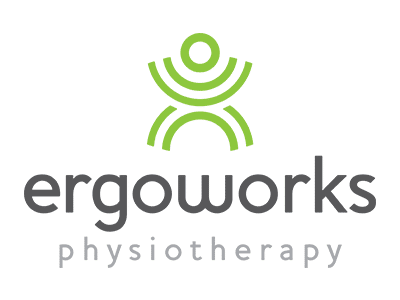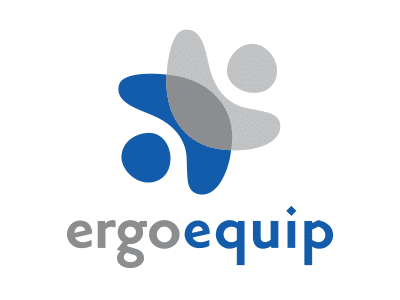The Ultimate Guide to Ergonomic Workstation Assessments for Offices

The modern office environment is a battleground for our bodies. Hours spent hunched over keyboards, straining necks, and aching backs – these are all too common consequences of working in poorly designed workstations. But what if there was a solution that could transform your workspace from a source of discomfort to a haven of comfort and productivity? Enter the Ergonomic Workstation Assessment (EWA) – a comprehensive evaluation that identifies potential risks and recommends solutions to create a safe and healthy work environment.
This guide delves into the world of Ergonomic Workstation Assessments for offices, equipping you with everything you need to understand their importance, benefits, process, and implementation. By the end, you’ll be armed with the knowledge to unlock a healthier and more productive workspace for your employees.
The Ergonomics Equation: Why Assessments Matter
Ergonomics is the science of designing workplaces to fit the needs of the people who use them. In an office setting, proper ergonomics focuses on creating a workstation that minimizes physical strain and promotes optimal posture and movement.
Why are Ergonomic Workstation Assessments important? Here are some compelling reasons:
- Reduced Risk of Musculoskeletal Disorders (MSDs): Prolonged sitting, improper posture, and repetitive motions can lead to MSDs like back pain, carpal tunnel syndrome, and neck strain. EWAs identify these risks and recommend adjustments to prevent them.
- Improved Employee Wellbeing and Comfort: Discomfort can be a major productivity killer. EWAs help create a comfortable work environment that reduces fatigue and promotes overall well-being.
- Enhanced Productivity and Focus: A comfortable and supportive workstation minimizes distractions and allows employees to focus on their tasks, leading to increased productivity and efficiency.
- Reduced Absenteeism: MSDs and discomfort often lead to increased absenteeism. EWAs can help minimize these issues and ensure a more reliable workforce.
- Improved Workplace Morale: A focus on employee well-being fosters a positive work environment and creates a more engaged and happier workforce.
- Reduced Injury Costs: Preventing MSDs translates to lower workers’ compensation claims and associated medical costs for businesses.
- Compliance with Regulations: In many regions, work health and safety regulations mandate proper ergonomic assessments for workstations.
The EWA Process: A Step-by-Step Guide
An Ergonomic Workstation Assessment typically follows a structured process:
- Initial Consultation: An ergonomic consultant will discuss your needs, the number of workstations to be assessed, and any specific concerns you may have.
- Workstation Evaluation: The consultant will visit your office and conduct a thorough evaluation of each workstation, taking into account factors like:
- Furniture type and adjustability: Are chairs and desks properly adjustable to accommodate different body sizes and postures?
- Computer monitor placement: Is the monitor at an appropriate height and distance for optimal viewing?
- Keyboard and mouse placement: Are these peripherals positioned correctly to minimize wrist strain?
- Lighting and temperature: Does the lighting provide adequate illumination without glare, and is the temperature comfortable for all employees?
- Work practices: Are there any repetitive motions or awkward postures that could be contributing to discomfort?
- Risk Assessment: Based on the evaluation, the consultant will identify potential ergonomic risks associated with each workstation.
- Recommendations: The consultant will then provide a tailored report with recommendations for each workstation. These recommendations may include:
- Furniture adjustments: Suggestions for properly adjusting existing furniture to improve posture and comfort.
- Equipment upgrades: Recommendations for new ergonomic furniture like chairs with adequate lumbar support or adjustable keyboard trays.
- Workplace modifications: Suggestions for modifying the work environment, such as adding footrests or standing desks.
- Behavior changes: Recommendations for promoting healthier work practices like taking regular breaks and stretching exercises.
- Implementation and Follow-up: The consultant can assist you in implementing the recommended changes and provide follow-up support to ensure the effectiveness of the EWA.
Choosing the Right Ergonomic Consultant for Your Needs
Selecting a qualified ergonomic consultant is crucial for a successful EWA. Here are some key factors to consider:
- Qualifications: Look for consultants certified by a recognized ergonomics association with experience in office workstation assessments.
- Experience: Choose a consultant experienced in your specific industry or office type.
- Methodology: Understand the consultant’s assessment approach and ensure it aligns with your needs.
- Communication Style: Choose a consultant who can effectively communicate complex ergonomic concepts in a clear and understandable manner.
- Cost and Services: Get quotes from several consultants and compare their fees and service packages.
Beyond the Assessment: Creating a Culture of Ergonomics
An Ergonomic Workstation Assessment is a valuable first step towards creating a healthy and productive work environment. However, it’s just the beginning. Here’s how to cultivate a lasting commitment to ergonomics in your office:
- Employee Training and Education: Provide basic ergonomics training to employees, empowering them to identify potential risks and adjust their workstations for optimal comfort.
- Communication and Feedback: Encourage open communication with employees and solicit feedback throughout the process. This fosters a sense of ownership and ensures the solutions implemented are truly effective.
- Investment in Ergonomic Equipment: Invest in ergonomic furniture and equipment based on the EWA recommendations. Consider flexible options like standing desks or adjustable chairs to cater to individual needs.
- Regular Reviews and Adjustments: Workstations and work practices can change over time. Conduct regular reviews and make adjustments as needed to maintain an ergonomic work environment.
- Leading by Example: Promote ergonomic practices within your leadership team. Use ergonomic furniture and encourage breaks and healthy postures to inspire others.
Investing in the Future: The ROI of Ergonomic Workstations
While the initial costs of Ergonomic Workstation Assessments and new equipment may seem like a significant investment, the long-term benefits outweigh the expense. Here’s how:
- Reduced Healthcare Costs: Preventing MSDs can significantly reduce healthcare costs associated with employee injuries.
- Increased Productivity: Comfortable and focused employees are more productive, leading to increased output and efficiency.
- Reduced Absenteeism: A healthy workforce leads to fewer missed workdays due to injuries or discomfort.
- Improved Employee Retention: A focus on employee well-being fosters a positive work environment that can help retain top talent.
- Enhanced Brand Reputation: A company taking steps to protect employee health projects a positive image and can attract skilled workers.
Ergonomic Workstation Assessments are a powerful tool for creating a healthy, comfortable, and productive work environment for your office. By investing in this proactive approach, you can unlock a range of benefits for your employees and your business. Remember, ergonomics is not a one-time fix; it’s an ongoing commitment to fostering a culture of well-being and ensuring a thriving work environment for all.
Ready to Take Action?
If you’re ready to create a healthier and more productive office space for your team, consider partnering with a qualified ergonomic consultant. Ergoworks Consulting offers comprehensive Ergonomic Workstation Assessments tailored to your unique needs. We can help you identify and address potential ergonomic risks, recommend effective solutions, and guide you towards creating a more comfortable and supportive work environment for your employees.
Contact us today to discuss your specific needs and learn how we can help you transform your office into a haven of ergonomics and well-being.


